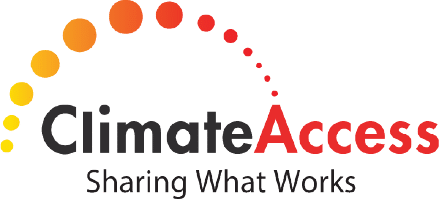When determining how best to engage the public in promoting the type of transformational change needed to address global warming, we often look to what has worked in the past, such as how citizens were rallied at home in support of World War II efforts through the creation of victory gardens, opting for meatless meals, or driving less; or how cultural norms have been shifted around racism, smoking, wearing seatbelts, or recycling. While these examples do provide lessons we can learn from, climate change represents an unprecedented risk. This is a considerable problem and is why we are tackling it first as we kick off our series on the seven reasons why the public is not engaged on climate.
A risk that is hard to see and visualize (i.e. the invisible accumulation of carbon and other greenhouse gases in the atmosphere) yet that will have exponentially negative implications for our lives the longer it goes unchecked is, in many ways, the worst type of risk imaginable. For many people, the issue appears too fuzzy—despite how much climate scientists know about climate change, they can’t pinpoint exactly when, where and to what degree the impacts will be—and not personal or immediate enough to elicit the worry necessary to motivate them to take precautions. For others, they may be concerned enough to do something about it, but there is research that indicates that taking a single action—not matter how small—in response to a problem can be enough to alleviate a person’s worry and deter motivation to take further actions.
When conveying climate risks to the public, it’s important for communicators to have an understanding of how people perceive risk and make decisions. Thankfully, there is a lot of good research that relates to climate risk—from psychology to behavioral economics—and I recommend that you take a look at our new collection of resources and tip sheet. I find the field quite fascinating, and I think that learning how people may have a finite pool of worry or that it’s important to recognize the public’s uncertainty–no matter how clear or fuzzy the facts—are things we should all know about.
To help break down what the research says and share how practitioners are communicating about climate risk in various fields, we have put together a stellar group of panelists for next week’s Climate Access roundtable (Wednesday January 25 from 2-3 p.m.) on Understanding and Addressing the Unprecedented Risk of Climate Change. I am looking forward to hearing they, as well as Climate Access members, have to say about communicating climate risk in public health, disaster management, national security and the world of investing. (Registration is now closed, but a recording of the discussion with be available online following the roundtable.)
Ed Maibach, director of the Center for Climate Change Communication at George Mason University (and Climate Access advisory board member), is a leading authority on the overall issue of communicating about climate and has a background in public health (he is the co-author of “Public perceptions of climate change as a human health risk: Surveys of the United States, Canada and Malta” (2010). I look forward to finding out Ed’s views on why global warming is unlike other risks and what we can learn from efforts to communicate public health risks.
George Haddow, principal in the disaster management consulting firm Bullock & Haddow LLC, works in New Orleans where the risks of inaction are particularly great. The co-author of “Global Warming, Natural Hazards and Emergency Management” (2009), he served as the deputy chief of staff for Bill Clinton’s FEMA director (James Lee Witt) where he developed and implemented FEMA’s communications strategy around Y2K. I plan to ask George how, if it’s hard enough to get people to evacuate an area when a extreme weather event is bearing down (let alone get the federal government to adequately respond), can coastal communities get residents to understand how climate change portends significant changes for the future including possible relocation.
Mindy Lubber is president of CERES as well as director of the Investor Network on Climate Risk, which consists of more than 100 institutional investors managing $10 trillion in assets focused on the business risks and opportunities of climate change. Last week, her group organized a summit on climate risk at the United Nations where they released a 2012 Investor Action Plan on Climate Risks and Opportunities. I’ve been impressed by how much traction CERES seems to be getting in communicating the financial risks associated with climate change and I look forward to discussing with Mindy how this perspective is helping to shape the climate debate.
Katherine Silverthorne is a climate security consultant and the co-author of “Degrees of Risk: Defining a Risk Management Framework for Climate Security” (2011). Climate change represents a national security risk for all nations, and I look forward to hearing from Katherine how climate security has the potential to depolarize the issue and, taking a page from the military, turn uncertainty from being an obstacle to engagement to being something the public embraces as a reason to take action.
We’ve appreciated hearing about risk resources from Climate Access members and we encourage people to make suggestions on research, speakers, topics, etc. Thanks! I hope that you are able to join us for next week’s roundtable conversation.

